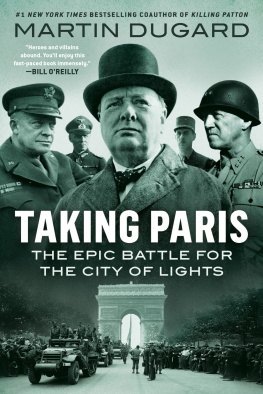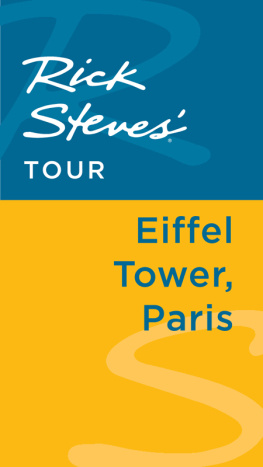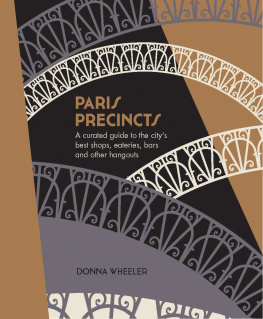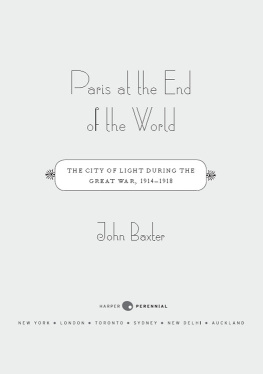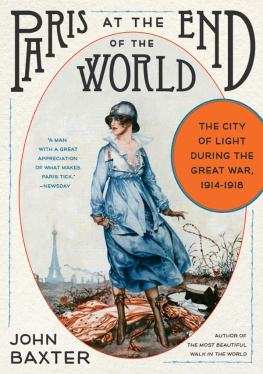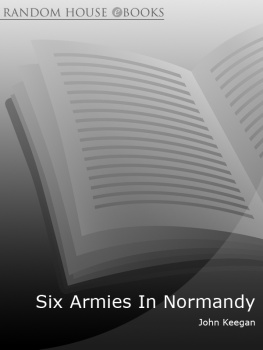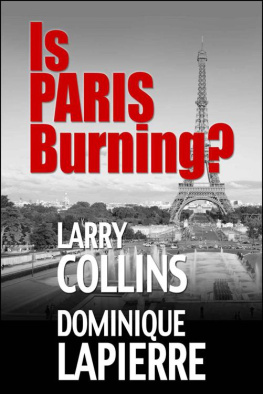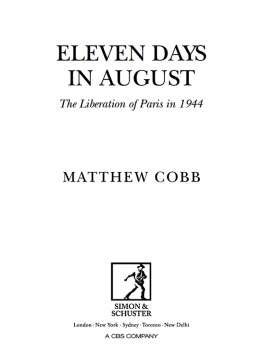Charles River Editors provides superior editing and original writing services across the digital publishing industry, with the expertise to create digital content for publishers across a vast range of subject matter. In addition to providing original digital content for third party publishers, we also republish civilizations greatest literary works, bringing them to new generations of readers via ebooks.
Sign up here to receive updates about free books as we publish them , and visit Our Kindle Author Page to browse todays free promotions and our most recently published Kindle titles.
Introduction

A picture of Charles de Gaulle and other French officers marching through Paris
The Liberation of Paris (August 1944)
The hour of our great revenge has come. Charles de Gaulle, August 1st, 1944
People of Paris [] the long-awaited day has arrived! French and Allied troops are at the gates of Paris. It is the sacred duty of all Parisians to do battle! The hour of national resurrection has sounded. poster displayed in Paris in August 1944
One of the most famous people in the world came to tour the city of Paris for the first time on June 28, 1940. Over the next three hours, he rode through the citys streets, stopping to tour LOpra Paris. He rode down the Champs-lyses toward the Trocadero and the Eiffel Tower, where he had his picture taken. After passing through the Arc de Triomphe, he toured the Pantheon and old medieval churches, though he did not manage to see the Louvre or the Palace of Justice. Heading back to the airport, he told his staff, It was the dream of my life to be permitted to see Paris. I cannot say how happy I am to have that dream fulfilled today. Four years after his tour, Adolf Hitler would order the citys garrison commander, General Dietrich von Choltitz, to destroy Paris, warning his subordinate that the city "must not fall into the enemy's hand except lying in complete debris." Of course, Paris was not destroyed before the Allies liberated it, but it would take more than 4 years for them to wrest control of France from Nazi Germany after they took the country by storm in about a month in 1940.
By the end of D-Day, June 6, 1944, the Allies had managed to successfully land 170,000 men, with over 75,000 on the British and Canadian beaches, 57,000 on the American beaches, and over 24,000 airborne troops. Thanks to Allied deception, the German army had failed to react to prevent the Allies from making the most of their landings. Just one division, the Hitlerjugend, would arrive the following day. Despite a fearsome and bloody day, the majority of the Allied forces had held their nerve, and most importantly, achieved their objectives. This ensured Operation Overlord was ultimately successful, and victory in Europe would be achieved within less than a year.
24 hours after the landings on June 6, 1944, however, the Allies still had plenty of work to do, and when the Allied High Command assessed the situation on the ground, it was clear that on no front had all of the objectives been achieved. The British and Canadians were ashore on Gold, Juno and Sword, yet Caen lay firmly in German hands. And in most cases, the various invasion forces lay clustered in isolated bands.
Given how the rest of the war played out, its often forgotten that the British and Americans, after breaking out from their D-Day beachhead on the continent, did not free Paris from its Third Reich garrison. Instead, it was the people of Paris themselves, encouraged by the Allied armies putting the Germans to rout nearby, who retook the city, led by figures from the French Resistance. The revolt that emerged involved many factions, chiefly the followers of Charles de Gaulle, or the Gaullists, and the communists of the PCF (Parti Communiste Francais, French Communist Party). These factions provided the spearhead and the catalyst sparking the people of Paris into rebellion against their Nazi masters, and the leadership coordinating that uprising and making it a success. Their rivalry and thirst for power spurred them on to outdo each other, but they all sought the same objective: defeat of the foreign occupiers.
Showing the mixed traits of a band of courageous freedom fighters and a bloodthirsty lynch mob, the Parisian rebels of 1944 also resembled the fiery, combative populace of medieval and Renaissance city-states. Though involving machine-guns, tanks, and radios, the liberation of Paris towards the end of World War II echoed the Sicilian Vespers or the Florentine street battles of the age of Girolamo Savonarola and the Medici.
The Liberation, once it began, required just one week to complete. Parisians fired the first shots on August 19, even as the Allies remained wary of trying to liberate Paris due to its cultural significance, knowing full well that Hitler could order the city destroyed. Nevertheless, on August 24, 1944, the French 2 nd Armored Division began liberating parts of Paris, with overjoyed crowds of Parisians welcoming them, while the other Allies entered the eastern part of the city. General von Choltitz decided not to bomb Paris during a retreat, instead surrendering the city intact on August 25. That same day, Charles de Gaulle made a speech at the Hotel de Ville celebrating the freeing of the city and calling for French armies to sweep into Germany and exact revenge on the Germans. The newly liberated Parisians greeted his words, as might be expected, with a thunderous ovation.
As that response suggests, its also conveniently forgotten that after the French people rose up to defeat the Germans in a patriotic frenzy worthy of opera, they subsequently turned on each other in a squalid outpouring of retribution, vendetta, and murder, sometimes of obviously innocent people. The torture and misogynistic abuse ended only when an official French government established itself firmly and cracked down on the anarchy, though it also carried out its own executions and imprisonments. The Allies' mistrust of all French factions as essentially authoritarian seemed vindicated.
The Liberation of Paris: The History of the World War II Campaign that Freed the French Capital from Nazi Germany chronicles the operations that pushed the Nazis out of Paris after nearly 4 years of occupation. Along with pictures of important people, places, and events, you will learn about the liberation of Paris like never before.
Chapter 1: The French Resistance and the Allied Invasion of Europe

A picture of Hitler in Paris in 1940
The liberation of Paris gained its leadership and driving energy from the French Resistance, which consisted of dozens of independent groups, though Charles de Gaulle attempted to coordinate them from afar through the umbrella Conseil National de la Rsistance (CNR) and the Forces Franaises de lIntrieur (FFI). The Resistance numbered some 26,000 members in the Paris area in mid 1944, but only some 4,000 of these individuals possessed weapons. The PCF communists mustered the biggest fighting unit, with some 600 men and women under arms, and de Gaulle cultivated their cooperation despite entertaining no desire to make France communist. In fact, he viewed his temporary Marxist allies as a totalitarian menace, but he wished to transcend political factions and act purely for France and himself.








